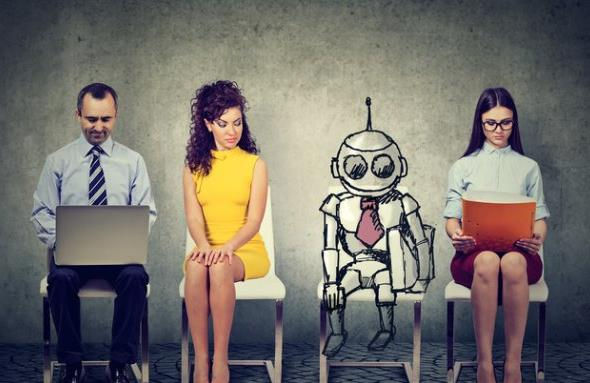The Robots Are Coming – But Will They Really Take Our Jobs?
- ESRA KÜÇÜKYALÇIN
- Mar 1, 2024
- 4 min read

If you follow the news, it’s hard not to worry about a future in which our livelihoods are replaced by machines and automated systems that don’t require insurance, paid leave, or corporate benefits.
Take the banking sector, for example. In September 2017, former Citibank CEO Vikram Pandit stated in an interview that artificial intelligence (AI) and robots would fill 30% of banking positions.
That same month, former Deutsche Bank CEO John Cryan said that up to 50,000 employees—half of the bank’s global workforce—could see their positions replaced by robots within a decade.
But is it really possible for these predictions to come true? A recent article in the Financial Times argued that the narrative of a world taken over by robots is exaggerated and misleading, obscuring the real impact of automation on the global workforce.
In its research covering Europe’s 30 largest banks, the Financial Times found that most are still trying to figure out how AI and robots can be applied to their processes, and to what extent machine learning can realistically replace “modest” human roles.
More importantly, many institutions stated that they would need to hire additional staff to help them understand how AI would change their operations.
Other industries are taking a similar approach to AI.
AI can never fully replace people in the outplacement equation. Job search—despite all the power and possibilities of AI—remains a deeply personal and complex experience that technology alone cannot completely understand.
In industries like banking and insurance, companies are looking for ways to integrate their employer brands with AI.
Let’s be clear—technology has already brought significant changes to the outplacement industry. Virtual services, LinkedIn, and online platforms are transforming the way we serve our clients and the way people find jobs.
Screening résumés and identifying potential candidates is a time-consuming and labor-intensive process. Research shows that those making hiring decisions are often prone to bias—whether based on gender, race, or age.
The tendency to hire people who look and sound like oneself has led to challenges for organizations in diversity and gender equality. While technology can eliminate some of these biases, the results are still far from perfect.
Many large companies now use résumé parsing technologies to better identify talent in their candidate pools. While there are many screening programs available, most involve automated storage and analysis of résumé data, helping companies classify and find candidates whose skills best match job requirements.
The problem with many screening algorithms is that they rely too heavily on semantic search, looking for specific keywords to classify and rank résumés. Yet different writing styles, sentence structures, and words can have multiple meanings.
As a result, it has become clear that résumé screening technology alone is not the ultimate solution for the HR industry. Could AI be the answer to the limitations of screening technology? Many employers think so. Talent acquisition specialists are already using AI tools.
According to Deloitte’s 2018 Global Human Capital Trends report, by the end of the year, two-thirds of companies were expected to use some form of AI to enhance hiring decisions. The growing interest in AI tools is based on their ability to deliver better results than purely semantic search engines or human-only screening.
Harvard Business Review compared the evolution of job applicants and machines across 17 metrics. The HBR report found that in nearly every measure, machines managed talent identification processes more effectively than those run solely by humans.
However, the researchers did not recommend removing the human factor entirely. The article concluded that AI is most effective at “narrowing the field” to identify the most promising candidates, but that the final decision should still be made by humans.
This is a crucial discussion for LHH because identifying hidden talent for positions announced by talent acquisition specialists is an area where we lead the way.
For years, talent acquisition professionals have wanted access to a pool of pre-screened, pre-qualified inactive talent that they could regularly review for open roles. This saves them the time they would otherwise spend screening unqualified résumés and allows them to make the right choice faster and at lower cost.
New technologies, especially those that bridge the gap between inactive talent and talent acquisition professionals, could be very useful in outplacement. If there are new processes and technologies that can shorten the distance between inactive talent and open positions, both job seekers and recruiters will benefit greatly.
Machines and algorithms can certainly help outplacement firms move forward—but it’s equally important to preserve the human element. As many industries are now experiencing, there are areas of the outplacement process that simply cannot be automated. Designing new processes, building personal connections through networking, face-to-face coaching, judgment, conceptual thinking, and empathy are concepts beyond the reach of AI—and they are essential to successful career transitions.
AI will undoubtedly help inactive talent find future opportunities. However, it will never fully replace humans in the outplacement equation. Job search—despite all the power and possibilities of AI—remains a deeply personal and complex experience that technology alone cannot fully grasp.
Greg Simpson




